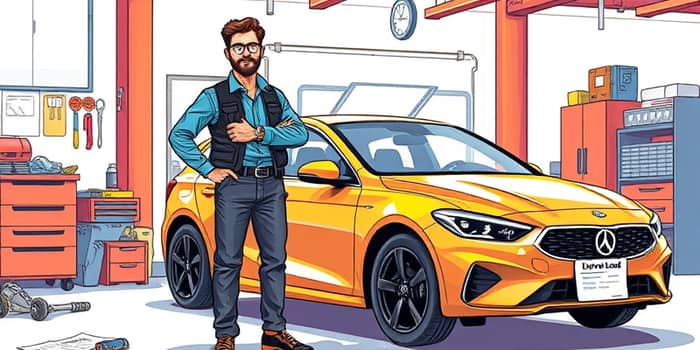
Every driver knows the sinking feeling when your car begins to make a strange noise or warning lights appear. Unexpected issues can halt your daily routine and strain your budget. In 2025, the stakes are higher than ever as rising maintenance bills and unpredictable repair emergencies collide with families’ financial pressures.
Recent data reveals that the average out-of-pocket expense per repair now stands at $838, reflecting a 6.5% increase from the prior year. The average vehicle owner spends about $1,424 annually on maintenance and repairs, based on 14,489 miles driven at a rate of 9.83 cents per mile. Since 1997, repair costs have soared by 184.37%, outpacing general inflation and making routine services like oil changes and brake inspections noticeably pricier.
Several factors drive these increases: vehicles are aging, with the average passenger car now 12.5 years old; technological complexity in modern systems; and supply chain disruptions affecting parts availability. Today’s most common repair categories include electrical system failures, cooling system leaks, and engine or transmission malfunctions that can quickly push bills into the high hundreds or low thousands.
To illustrate what drivers are up against, consider these average cost ranges for common services in 2025:
Small items like sensors and valves can cost $300 to $500, while critical components such as fuel injectors or transmission parts often exceed $1,000. When multiple repairs coincide, the total bill can quickly overwhelm most budgets.
When your emergency fund falls short, financing becomes essential. Several solutions exist, each with unique benefits and drawbacks:
Less ideal choices like title loans or payday alternatives should be approached with caution due to steep interest rates and significant risk.
Selecting the right funding vehicle requires careful analysis of costs, terms, and your long-term financial goals. Key criteria include:
By comparing total repayment amounts and reading the fine print, you can avoid unexpected charges and build credit through timely payments.
Personal loans have become a popular solution for auto repairs due to their flexibility. They provide a comprehensive mechanical coverage fund that applies to parts, labor, or diagnostic fees without requiring collateral. Borrowers enjoy fixed interest rates and set repayment periods—typically 12 to 60 months—which makes budgeting straightforward.
Strong-credit applicants can secure rates in the low single digits, while those with fair or poor credit may face higher rates but still benefit from predictable payments. When compared to credit cards or shop-based financing, personal loans often offer more favorable terms over the long haul, helping drivers avoid the pitfalls of revolving debt.
Beyond traditional financing, consider other funding sources before borrowing. Your emergency savings are usually the least expensive option. If you own a home, a home equity line of credit (HELOC) might offer lower rates, though it places your property at risk if you default. Collision or comprehensive insurance can cover certain accident-related repairs, but routine wear and tear typically falls under the owner’s responsibility.
Getting your car repaired without derailing your finances involves a clear action plan. Follow these steps to navigate the process smoothly:
As vehicles continue to age and technological complexity deepens, repair expenses will likely keep rising. By understanding the primary causes of cost inflation and exploring financing solutions like personal loans, drivers can mitigate financial stress and keep moving forward. Making informed choices today can preserve both your car’s reliability and your long-term financial health.
Car repairs are an unavoidable part of vehicle ownership, but you don’t have to face hefty bills unprepared. Armed with up-to-date cost data, a clear financing comparison, and a step-by-step plan, you can turn a stressful breakdown into a manageable expense. Personal loans stand out as a flexible, predictable solution that helps you get back on the road without sacrificing your financial well-being.
References













